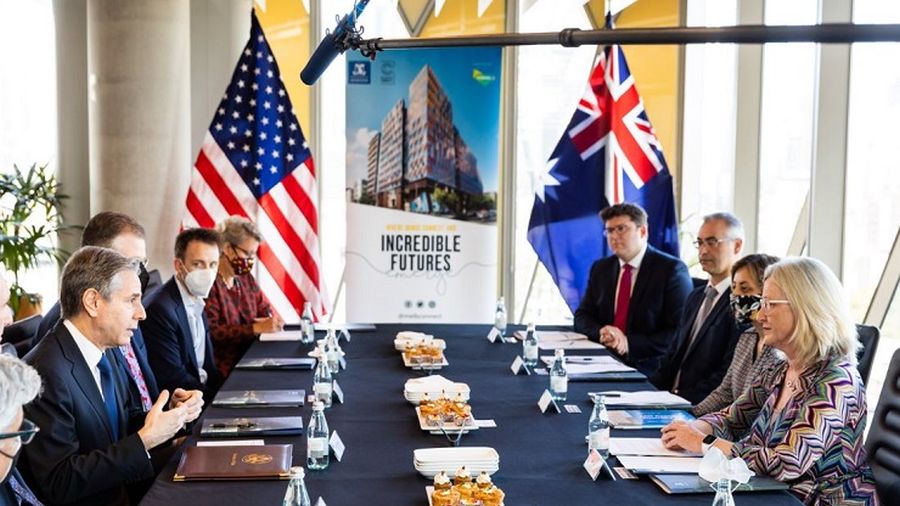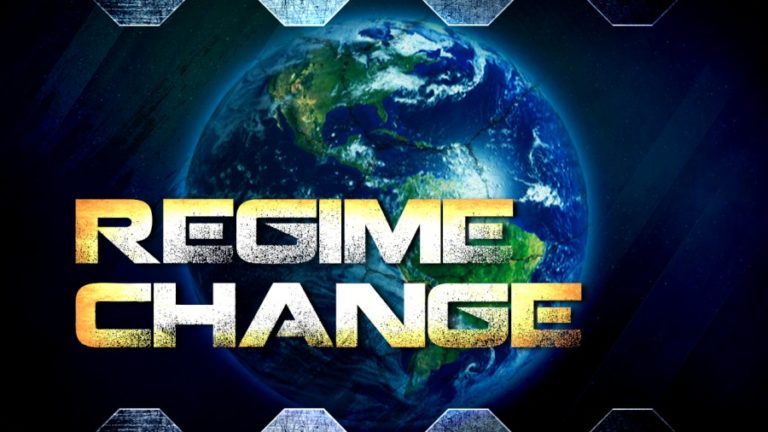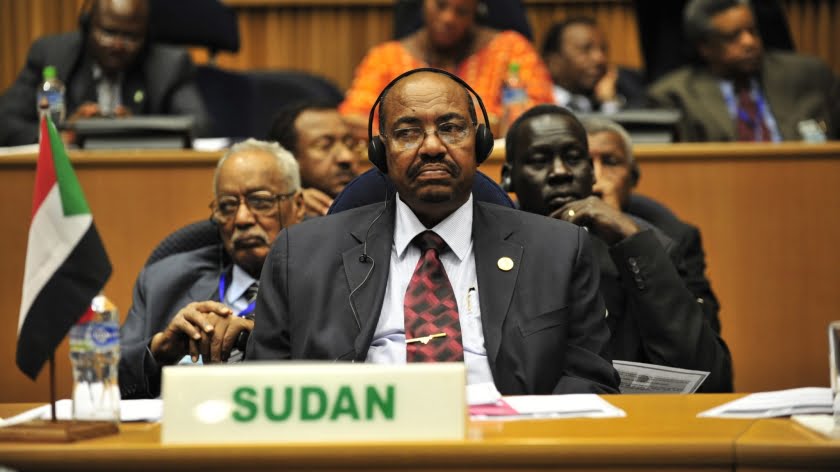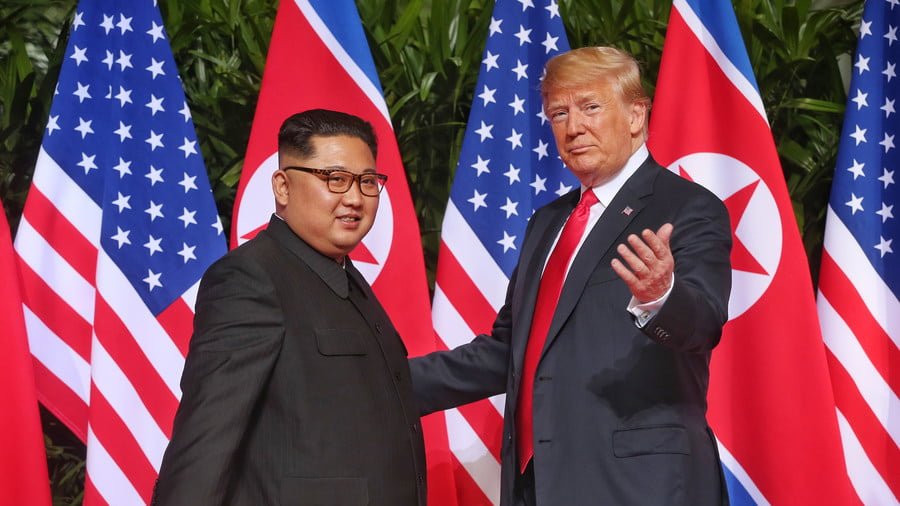Another Meeting of Quad Foreign Ministers
On February 11, Melbourne hosted the fourth meeting of foreign ministers of the countries participating in the Quad, which consists of the United States, Japan, India and Australia. Since the creation of this alliance in 2019, Washington (together with Tokyo and Canberra) attempted, firstly, to expand the scope of activity beyond the framework of an “interest club” (mainly humanitarian), and, secondly, to tightly involve Delhi in the entire “expanded” range of Quad’s activities.
Such expectations could be seen, in particular, in an article published the day before by the hostess of the upcoming event, that is, the Minister for Foreign Affairs of Australia, Marise Payne. And, judging by the final “Joint Statement”, these expectations were not unfounded.
The key message of the entire paper is expression by the event’s participants of their “commitment to supporting Indo Pacific countries’ efforts to advance a free and open Indo-Pacific – a region which is inclusive and resilient, and in which states strive to protect the interests of their people, free from coercion.”
This has been a well-established mantra in recent years, incorporating a very topical political content, which de facto is in the focus of the escalating struggle between the United States and the duo of its now main geopolitical opponents, that is, China and Russia. Incidentally, a week before the event under discussion, the leaders of these two signed a “Joint Statement,” quite significant in modern world politics. The very fact of its appearance, undoubtedly, cast its shadow on the course and results of the work of the Quad foreign ministers in Melbourne.
Although the text of the document they adopted does not explicitly mention China and Russia as sources of threats to the “freedom and openness” of the ITR, nor does it mention any cases of “coercion”, both of these powers are easily recognized from its very content. In addition, they were directly pointed out by US Secretary of State Antony Blinken at the final press conference.
Naturally, Western commentators of the Melbourne meeting do not hesitate to point fingers at Beijing and Moscow. In this context, Taiwan, Ukraine, Lithuania and Australia are most often mentioned as the latest examples of “victims” of the Chinese-Russian “coercion.” The appeal by the EU leadership to the WTO with a complaint against China, which took some “painful steps towards Lithuania in the field of trade” (due to the latter’s reckless intervention in the Taiwan problem, an extremely sensitive issue for Beijing), was supported by the so-called “G7.”
As for the euphemisms used by the participants of the Melbourne meeting in their Joint Statement, even Tokyo – for now – avoids directly singling out China (or Russia) as the main source of its foreign policy problems. Naturally, so does Delhi. This is especially peculiar, given that without first involving India in its sphere of influence, Washington would not have ventured to even initiate the so-called Indo-Pacific Economic Framework, IPEC.
Meanwhile, its development was announced in late October 2021 at some regional event by US President Joe Biden. IPEC is undoubtedly supposed to play the role of an American alternative to China’s key global project, the Belt and Road Initiative, which is the main instrument for spreading China’s political influence in the world. But so far, the only thing known about IPEC is that this project is still under development, even though from time to time there appear information leaks regarding its supposed content.
To reiterate, Washington assigns a key role to involving India in the general process of shifting its foreign policy focus towards the IPR, as well as the implementation of the (future) IPEC project. Therefore, it would be extremely imprudent on the part of the US leadership to embarrass Delhi in its already difficult relations with Beijing.
The reason for a new hiccup in said relations was the opening ceremony of the 2022 Beijing Winter Olympics. The flag of Team China was carried by the former commander of the group of Chinese border guards who directly took part in the clashes with Indian border guards in the summer of 2020, in the Galwan river valley in Ladakh. Although (seemingly) no shot was fired, there still were casualties on both sides. The numbers are still not entirely clarified, and in India this issue remains one of the topics of internal political struggle. Some of the players outside of this conflict are providing their own data on the losses on both sides of the Galwan conflict of two years ago. Indeed, why not pour salt on other people’s wounds that have not healed so far?
How painful they remain is evidenced by the demarche of the Indian Ambassador to China, caused by the fact that the flag of the host country of the Olympics (an event whose main slogan is O Sport, You Are Peace!) was carried by the commander of those same Chinese border guards. He simply fulfilled his military duty to his Motherland two years ago, which resulted – as is almost always the case in such conflicts – in death of people. Again, on both sides.
It is not for the author to judge the correctness or fallacy of the decision of the PRC leadership to select him as the national flag bearer during an international sporting event, at whose opening (amidst a “diplomatic boycott” by Beijing’s geopolitical opponents) the Indian ambassador nevertheless appeared. However, he soon left the guest podium. This new unpleasant incident in relations between the two Asian giants occurred, again, exactly one week before the Quad foreign ministers’ meeting, which clearly had an anti-Chinese orientation. It is hardly in the interests of Beijing to accelerate the drift of Delhi towards Washington, China’s main geopolitical opponent.
Among other noteworthy theses of the “Joint Statement” adopted at the end of the meeting in Melbourne, were the support of the claims of the ASEAN member countries for the central role of this Association in all aspects of the situation in the Southeast Asia, the condemnation of the military coup a year ago in Myanmar, as well as Pyongyang’s more frequent testing of the latest types of missile weapons in recent months. Moreover, according to Western commentators, the North is demonstrating achievements in the field of hypersonic missiles, the fight against which raises the entire problem of missile defense to a whole new level of complexity.
From Melbourne, US Secretary of State Antony Blinken, after an intermediate stop in Fiji (countering the spread of China’s influence in the Pacific is also becoming one of Washington’s main foreign policy concerns), went to Hawaii, where the US-Japan-South Korea trilateral ministerial meeting took place.
This event turned out to be yet another attempt to turn this configuration into a full-fledged tripartite military-political alliance. These attempts have been made over the past twenty years with almost no results. For the sole reason of (hardly fixable) problems in relations between Washington’s two main regional allies, Tokyo and Seoul.
The stated reason for holding the Hawaiian meeting was the aforementioned North Korean missile tests. However, in the speech of US Secretary of State Antony Blinken at the final press conference equal attention was paid to the situation in Ukraine. Blinken repeated the same accusations Washington has leveled against Moscow in recent months, as the Ukrainian crisis has escalated.
It is worthy noting, however, that this topic was only briefly and in neutral terms touched upon in the speech of the South Korean foreign minister and was completely left out from the speech of his Japanese counterpart. The topic of Ukraine is also nowhere to be found in the Associated Press editorial on the results of the tripartite ministerial meeting in Hawaii.
Overall, this last meeting, as well as the previous event in Melbourne in the Quad format, are another evidence of Washington’s ongoing attempts to build something similar to an anti-Chinese front comprising its closest allies and partners in the region.







